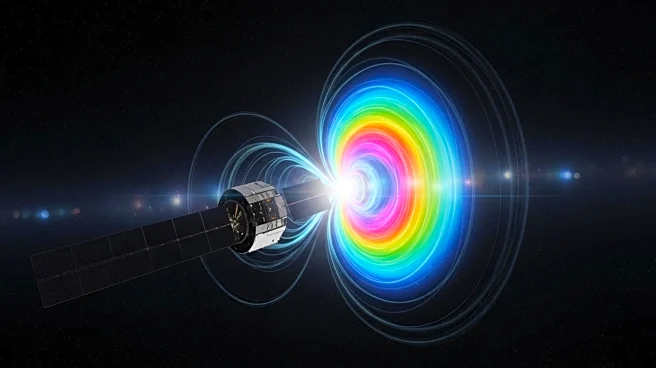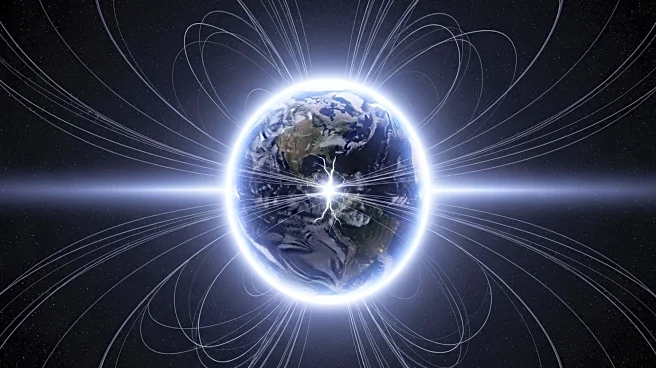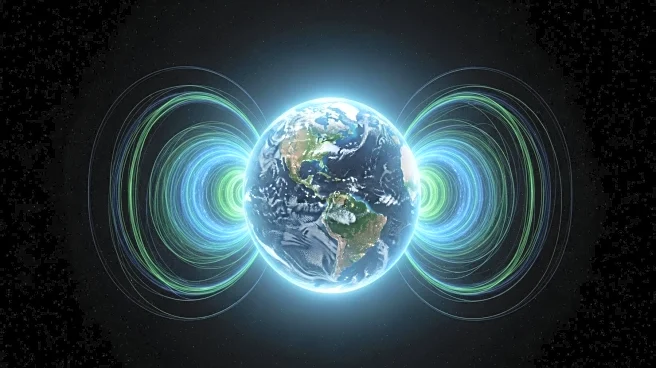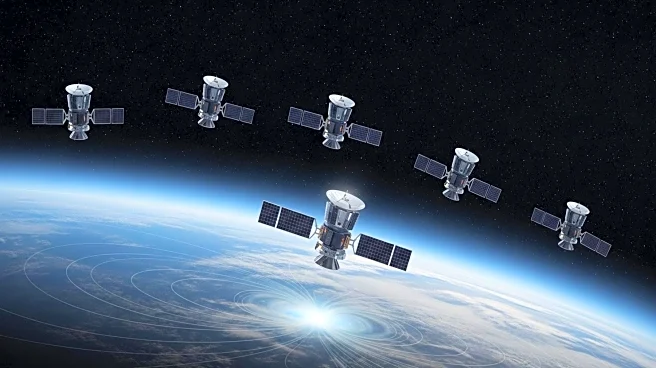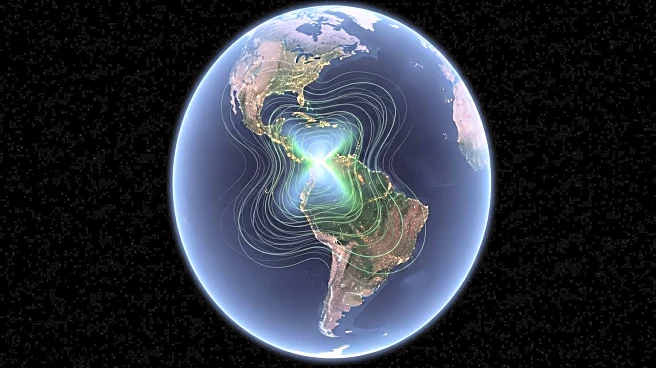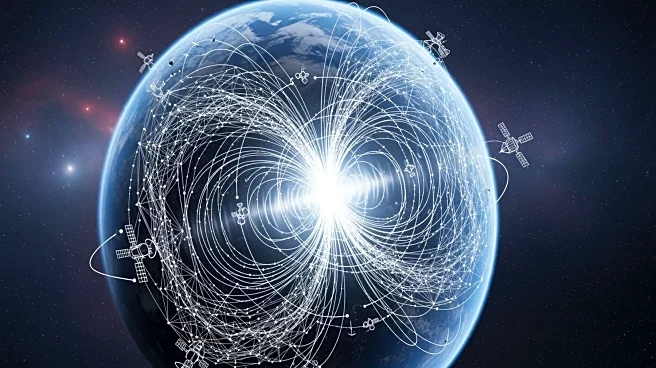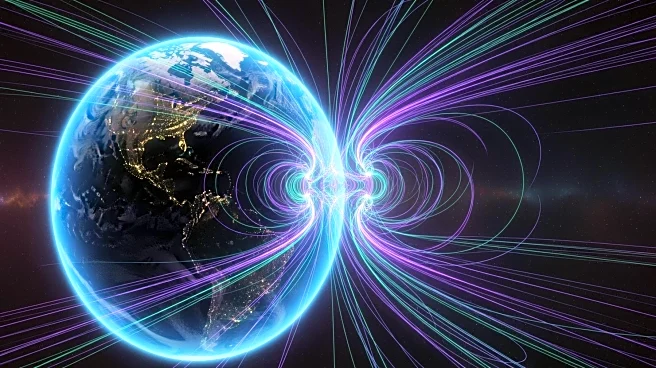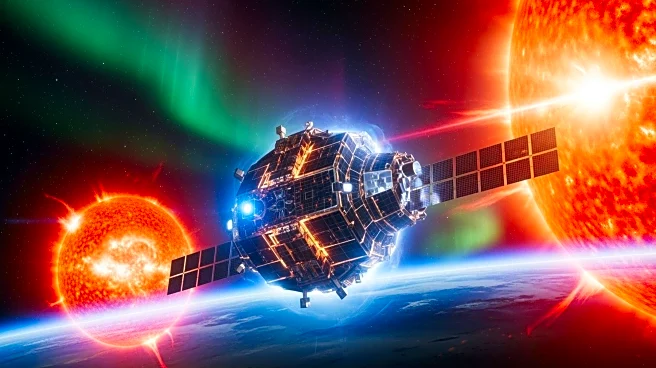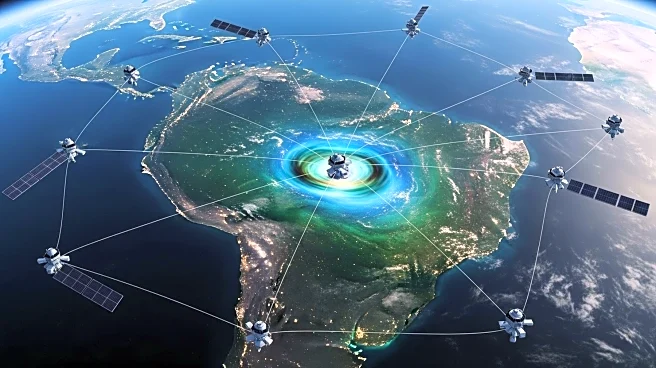What is the story about?
What's Happening?
Recent satellite data has revealed that the South Atlantic Anomaly (SAA), a dent in Earth's magnetic field, is expanding. This anomaly stretches across the region between Africa and South America and has grown by half the size of continental Europe since 2014. The anomaly's magnetic intensity is weakening, indicating complex behavior in Earth's outer core, which generates the magnetic field. The European Space Agency's Swarm mission, consisting of three satellites, has been monitoring these changes since 2013, providing the longest continuous data on Earth's magnetic field.
Why It's Important?
The expansion of the South Atlantic Anomaly has significant implications for navigation systems and satellite operations, as a weaker magnetic field increases vulnerability to charged particles. This could lead to hazardous charge buildup on satellites and higher radiation exposure for astronauts and high-altitude flights. Understanding these changes is crucial for developing predictive models to mitigate potential risks. The anomaly also offers insights into the dynamics of Earth's core, contributing to geophysical research and enhancing our understanding of planetary behavior.
What's Next?
Scientists will continue monitoring the anomaly to understand its causes and potential impacts. The Swarm mission aims to extend its data collection beyond 2030, providing unprecedented insights into Earth's magnetic field during the solar minimum. Further research may explore the link between the anomaly and the African Large Low-Shear-Velocity Province, a mysterious blob of super-hot material outside Earth's core. These studies could lead to improved models for predicting magnetic field behavior and its effects on technology and human activities.
Beyond the Headlines
The anomaly's expansion highlights the dynamic nature of Earth's magnetic field and the complex interactions within the planet's core. This research underscores the importance of continuous monitoring and international collaboration in understanding geophysical phenomena. The findings may prompt a reevaluation of existing theories about Earth's magnetic field and its long-term stability.
AI Generated Content
Do you find this article useful?
